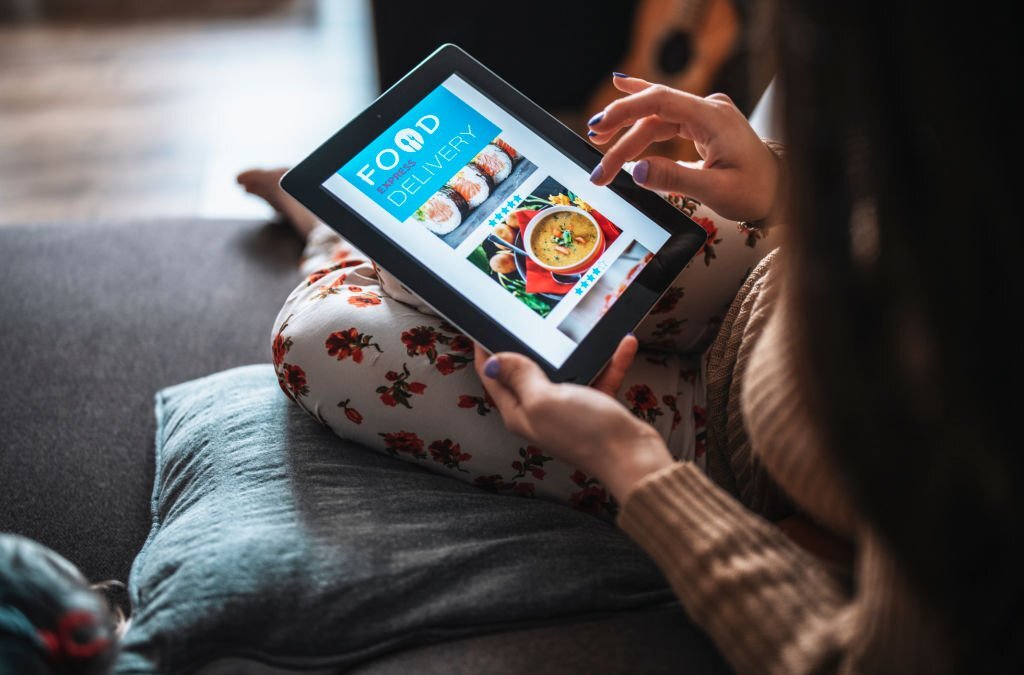

The food and beverage industry has been revolutionized daily, with technology changing the way operation management and food preparation in restaurants and bars are taken, thus changing the experience of customers. Over the decade, technological advances have radically changed, or are changing, almost every facet of the dining experience. From modernized ordering efficiency to kitchen automation, digital solutions are continuously improving efficiency, increasing profitability, and enriching the customer experience.
A National Restaurant Association report finds that 76% of restaurant operators believe technology helps to drive sales and enhance the customer experience. The trends in restaurant technology, such as AI-based personalization and contactless dining, will revolutionize the industry in at least three key ways: enhanced efficiency, improved customer experiences, and augmented profitability. It also helps restaurants predict demand, reduce food waste, and offer highly personalized services.
Today, most restaurants invest in AI to optimize their operational tasks, marketing activities, and services. Amidst this digital transformation, integrated cloud-based POS systems are fast becoming the norm along with mobile apps and kitchen automation. Innovation adoption has become a necessity to sustain the tectonic changes sweeping the market today.


From being merely a billing mechanism, the POS has emerged to become an indispensable tool that smoothens the restaurants’ operation process right from billing to inventory management. Conventional systems were largely hardware-dependent, while state-of-the-art cloud-based and mobile POS solutions offer flexibility and functionality. Such systems allow real-time updates to enable a restaurant to manage orders, payments, and stock efficiently. Cloud restaurant POS systems operationalize with integrated functionality regarding customer loyalty programs and analytics tools, maintaining customer behavior in a record, offering personalized rewards, and making informed decisions to improve service and profitability for increased customer retention while day-to-day operations are streamlined.
Digital ordering systems have transformed customers’ interactions with restaurants, making it all smooth and hassle-free both inside the house and online. In certain areas, QR code menus and mobile apps enable customers to bypass waiting for a server and place orders themselves. Cut wait times and minimize human errors. Restaurants stand to gain from this as these systems will make service much quicker due to reduced mistakes and increased revenue. These also give easy management of high-order volumes, especially during peak hours. If consumer preference is going to shift toward contactless methods, then digital ordering systems will be crucial for restaurants.
Demand for contactless payment means has surged. Technologies such as mobile wallets, NFCs, or QR codes allow customers to complete transactions speedily and safely, reducing the need for physical contact. While contactless payments are more secure, they are also very convenient. It brings faster payment processing and thus improves customer satisfaction. This trend is expected to mushroom more sophisticatedly, with many diners preferring hygiene and efficiency.
Third-party and in-house food delivery platforms, such as Grubhub and UberEats, have modern restaurants expanding their reach beyond the four walls of their establishments. Many are integrated through restaurant management systems to ensure effortless order flow from the application directly into the kitchen. Further, food delivery platforms support restaurants with a bunch of analytics to make informed decisions on menu items, customer preference, and delivery performance.
Automation in kitchens is going to be a game-changer for restaurant operations. Smart ovens, automated fryers, and robotic chefs would reduce human errors in operations, decrease labor costs, and ensure consistency in food preparation. These tools also allow restaurants the ability to scale their operations and manage larger volumes of orders with minimal human intervention. Automation offers huge benefits within high-speed environments where pace and efficiency become crucial routines.
Due to this new trend, restaurants should provide customized experiences with the help of mobile applications. It can include loyalty programs, reservation systems, and some exclusive offers to the customers. Because of all these services, restaurants will be able to build a good rapport with their customers. Artificial intelligence helps in providing recommendations regarding customer preferences about cuisines, recipes, or dishes ordered previously. This artificial intelligence incorporated into the apps helps restaurants improve customer loyalty and increase their retention while increasing interaction with them.
Self-service ordering kiosks continue to trend upwards in quick-service and fast-casual restaurants. These self-service ordering kiosks improve the times that customers wait in lines, thus giving them independence in placing their orders. Besides making customers happy, the kiosks also help restaurant owners provide a seamless in-house experience through their integration with POS and loyalty systems while collecting very important data on customer preferences.
Data analytics has become a significant tool that would enable restaurants to comprehend their customers, sales, and inventory. With analytics, therefore, restaurants would be able to refine menu offerings, reduce food waste, and could also forecast the demand for the dish more accurately. For example, being aware of the right amount of dishes ordered during a specific period would save the eating business from overstocking and hence strengthen its bottom line. Analytics has also allowed restaurants to refine their marketing strategy by targeting segments of customers they wish with better efficiency.
AI in restaurants will keep on revolutionizing operations, from predictive analytics that forecast demand to chatbots that improve customer service. AI-powered tools will gesture towards menu items for customer preference, automate inventory management, and even help in dynamic pricing. Adds to that, robotics and smart kitchens will find their incidence increase a giant leap for restaurant technology trends. If restaurants want to stay competitive, then they will need to innovate with these and, in general, be part of an overall digital transformation.
Robotic chefs and self-service kiosks will be changing the approach to restaurant operations management. Robots will, from now on, be completing all those repetitive tasks in the kitchen, like frying, grilling, and putting food together—a lot faster and with minimal chance of human error. In fast food, self-service kiosks enable consumers to place customized orders with very little help from staff. This functionality offers an enhancement not only in building up efficiency but also in improving the experience of eating out.
Nowadays, blockchain technology has been increasingly adopted as a way to improve food safety and transparency of the supply chain. Restaurants, through blockchain, can examine where particular ingredients originate from and the quality the suppliers are offering to see whether they meet their safety standards. Further, increased transparency via blockchain across the supply chain helps in reducing fraudulent dealings, hence it increases customer trust. So, since there is purposeful development in consumer awareness about food safety, blockchain will play a key role in availing this information to consumers about their food sources.
Soon, AR and VR technologies are entering the restaurant industry by trying to find new ways of engaging food consumers. For example, AR allows restaurants to offer interactive menus where customers can see what each dish looks like even before ordering. VR, on the other hand, offers immersive dining experiences. This technology enhances customer interaction and ensures the differentiation of restaurants within the existing competitive market.
Restaurant technology is fast transforming the restaurant business improving operational efficiency, enabling customer satisfaction, and advancing sustainability. Such tools as cloud-based POS systems, AI-driven kitchen automation, and data analytics streamline the processes, enabling restaurants to reduce costs, minimize waste, and optimize customer experience. Meanwhile, contactless payments and self-service kiosks speed up service, enhancing safety, while AI and blockchain improve supply chain transparency and food safety.
In fact, in the era of digital transformation in restaurants that exists today, continuous adoption of new technologies is the only surefire method through which restaurants can remain competitive in an ever-changing marketplace. Since consumer preference is driven by technological advancements today, restaurants that adopt AI, automation, and digital ordering will not only satisfy customer demands but also set their brands up for success in the long run. In an industry that is constantly evolving, one thing is no longer optional but a matter of survival and growth: merely remaining updated about recent innovations.
Wondering how to boost online sales and customer engagement in your furniture eStore? Take inspiration…
Are you looking to improve the speed of your WooCommerce store to be more efficient,…
TikTok's AI features totally change the way that videos are made because they unveil possibilities…
The aviation sector is growing continuously. Nowadays, airlines use modern technology for better pilot training.…
Tiffany Stratton Wiki / Bio: Jessica Woynilko, also known as Tiffany Stratton, was born on…
Offering file uploads in a WooCommerce store helps store owners gather specific files from customers…